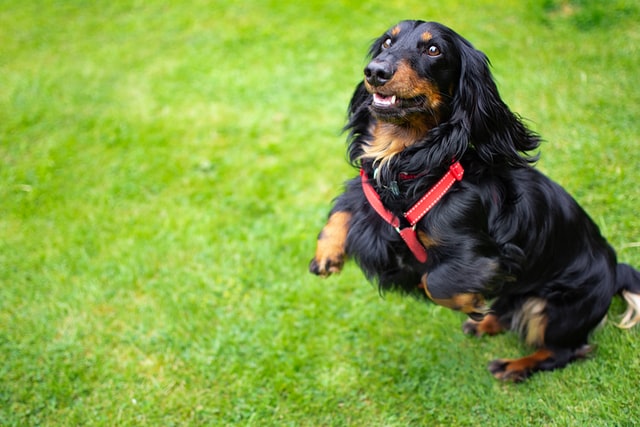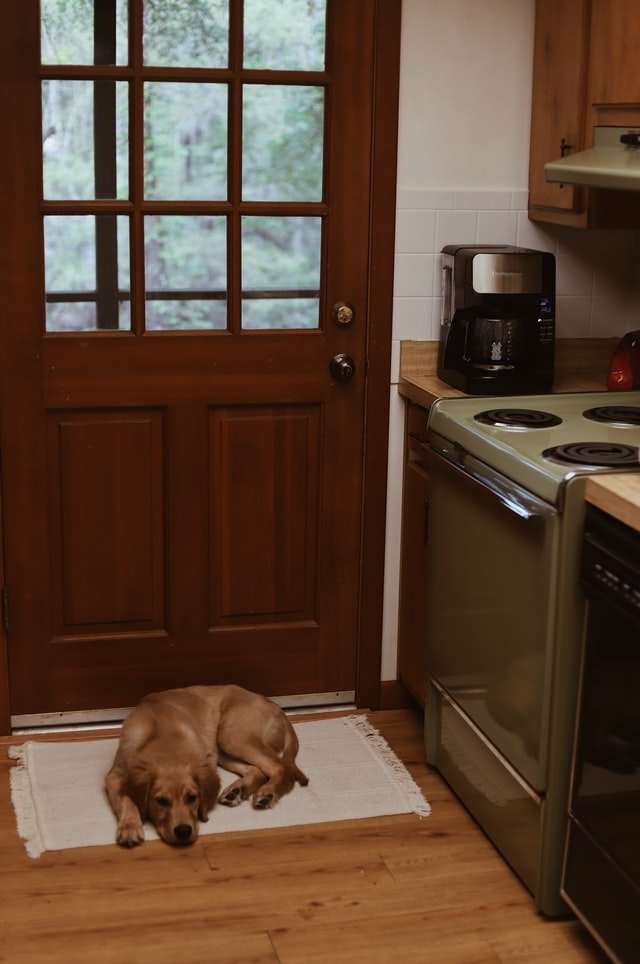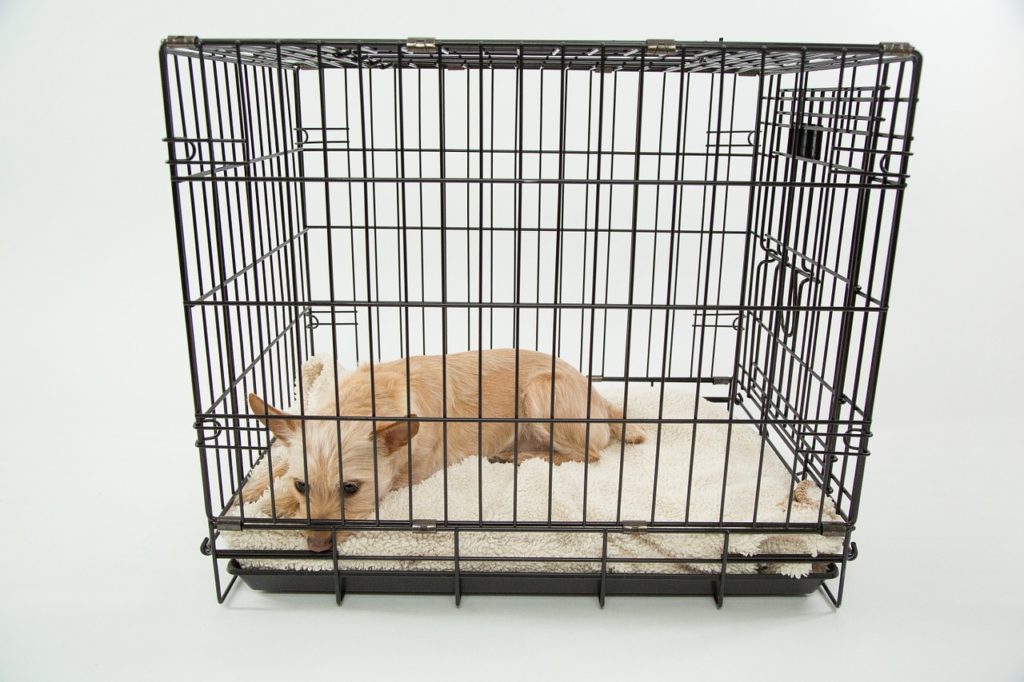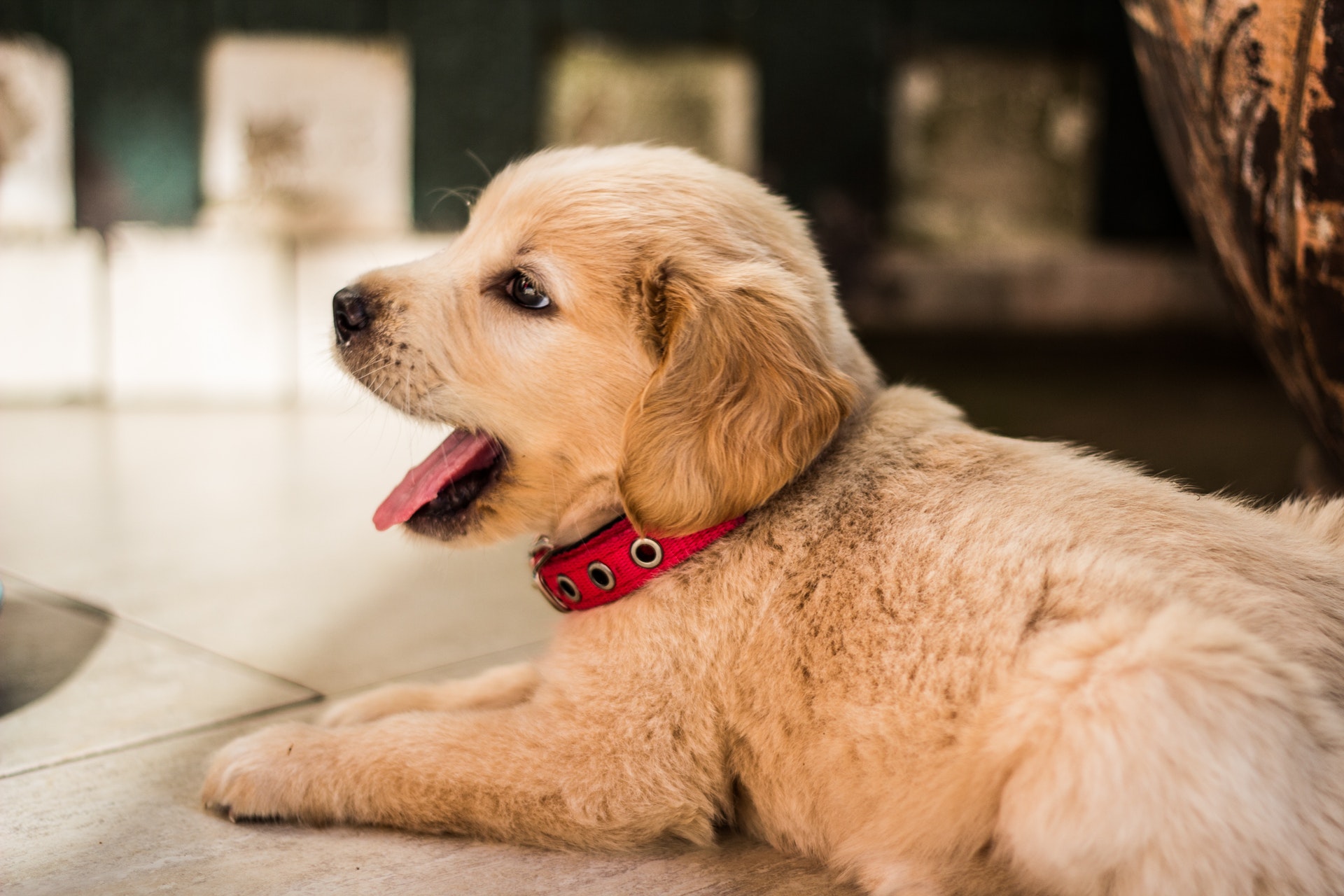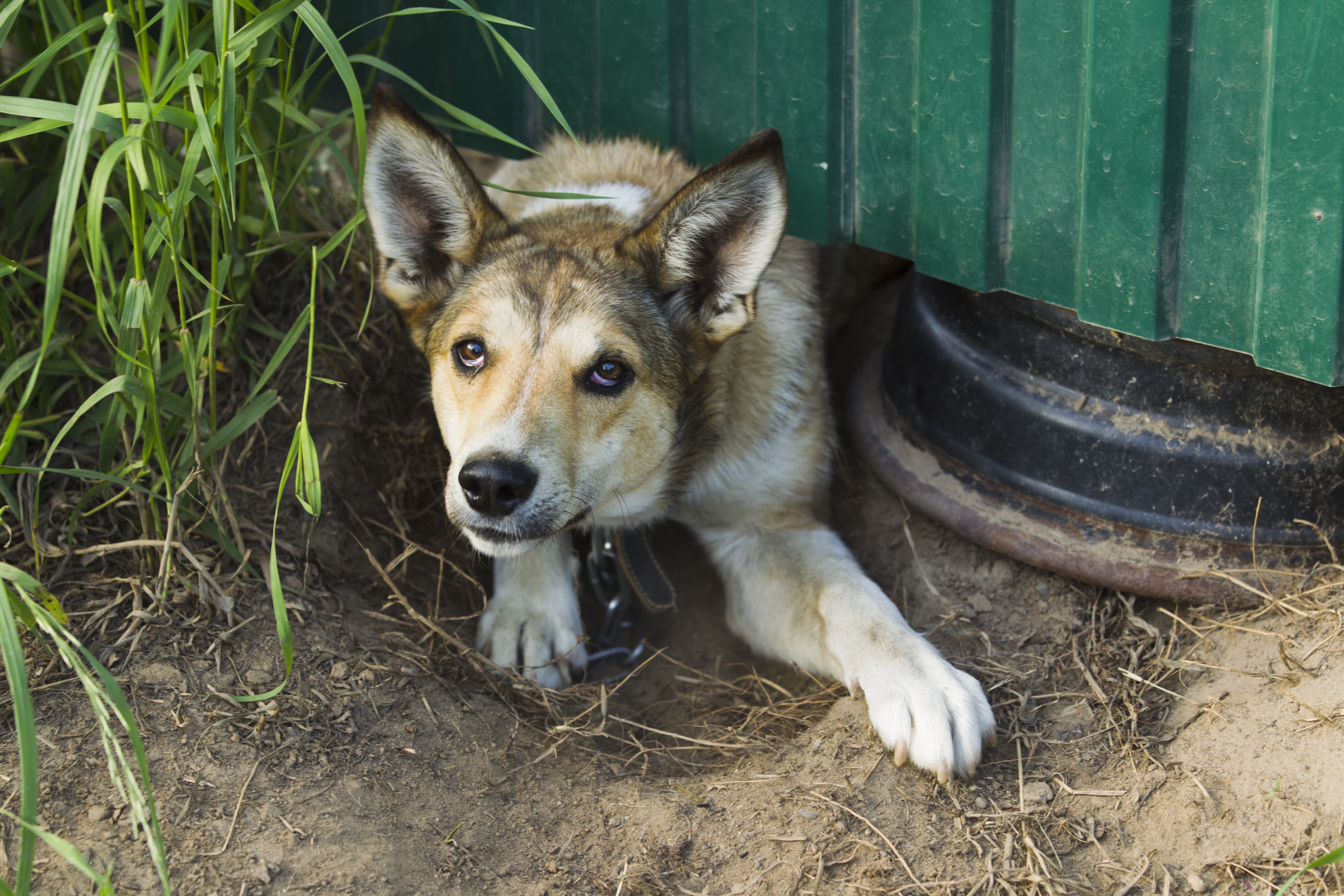How to Train a Dog Not to Jump
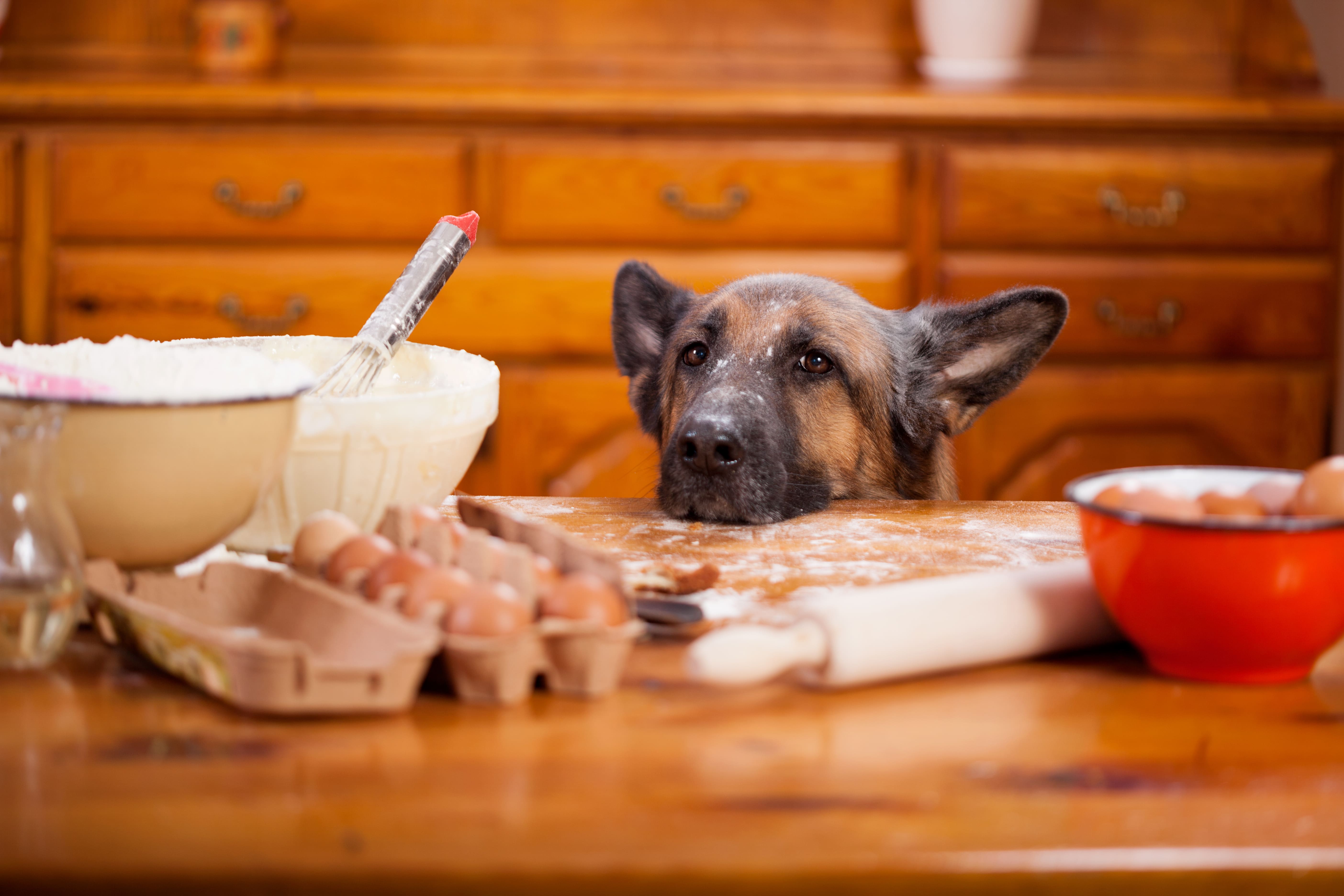
Your tiny puppy jumps on any- and everything he comes into contact with and, because he’s little and cute, no one minds. Plus, he’s too short to really reach anything of consequence on countertops.
However, when your tiny puppy turns into a full-grown dog and hasn’t been taught to stop jumping, he’s going to create some stress — and possibly some damage as well!
It’s essential to learn how to stop a dog from jumping on the counter, guests, and anywhere else you don’t want them. At a minimum, your pants (or shirt depending on your pup’s height) may end up covered with muddy pawprints. Learning how to train a dog not to jump prevents this unwanted behavior.
Even worse, lovely meals and birthday cakes end up as goners if your pup spends time counter surfing. Learning how to keep your dog off the counter helps curb these incidents. Teaching your young pup to keep all four paws on the floor is a critical part of having a well-trained dog.
Three Tips to Stop Dog Jumping
Try these tips to learn how to train a dog not to jump on people and to stay off of your counters.
- Curb that Enthusiasm
Your dog jumps when they’re excited. Even if a jumping dog doesn’t bother you, this habit comes across as very rude — or even scary — to many other people. Dogs can’t distinguish between the different people they jump on, so you must train them not to jump at all, no matter who it is.
This excitement is also caused by forbidden — and often delicious — items on kitchen counters. Learning how to stop a dog from jumping on the counter not only preserves your food but helps keep your dog safe from ingesting potentially toxic items.
The first step in how to train a dog not to jump is to train yourself. Never touch your dog unless all four of their paws are on the ground. Because they crave your affection, your dog learns quickly that they don’t get a pat if they’re jumping.
Cuddling or petting them when they’re jumping is a reward and teaches them that this is acceptable behavior. If your dog jumps up on you, turn your back and completely ignore them. You can use your leg to gently shove them off, but for a lot of dogs, this quickly turns into a fun game of “shove.” It’s best to simply ignore your pet while saying a firm, calm “down” command.
Once your pooch sits down with all four paws on the floor, calmly offer them praise. When learning how to train a dog not to jump, keep your voice and actions devoid of excitement. If your dog acts overly excited, ignore them again until they calm down. Using a loud, booming voice will only excite them more, so keep it low. Give them attention only when they’ve calmed and are showing less interest in you.
These tips also work if you want to know how to keep your dog off the counter. The difference is you can use your body to gently move them off the counter while giving that same firm “down” command. Don’t shove and turn it into a game. Move gently sideways into them until all four paws are on the ground and then calmly praise.
- Teach a Polite Greeting
Many times dogs use jumping on people as a way to greet or say hello. Dogs whose owners haven’t learned how to train them not to jump don’t realize that this is rude and unacceptable. As the owner, you must make sure your dog’s manners are polite.
Teach your dog to sit prior to greeting someone, which will ensure they’re calm first. If your dog hasn’t yet mastered the sit/stay, don’t attempt to teach them not to jump. Avoid the temptation to simply hold their collars to keep them sitting; this can excite dogs the same way walking on a tight leash does. They need to have a solid sit before learning the more complicated task of not jumping.
When introducing your dog to a new person, ask the person to calmly and slowly approach your pup while completely ignoring them. Firmly use the “sit” command while ensuring your dog obeys.
Learning how to train a dog not to jump needs persistence. Require your dog to sit until he can calm down, otherwise, they don’t get to say hello. If you find it difficult to keep your dog seated, explain to the person that your dog is still learning. Tell them that saying hello is a reward and your dog must earn it by being calm. If your pup simply won’t behave, tell the person that they aren’t allowed to greet them right now and ask them if they can try again another time. Eventually, your pup will begin to understand your expectations and obey.
- How to Stop a Dog from Jumping on the Counter
Another vital thing to master is how to train a dog not to jump on the counter. Jumping on people and jumping on counters come from very different motivations for dogs. Dogs who jump on people simply want to give a happy greeting. Dogs who get on counters usually do so because they’re looking for something they aren’t supposed to have.
The fact that your dog tries to do this in secret makes it one of the most difficult behaviors to stop. In the case of counter surfing, your goal should always be prevention. Because many human foods actually make dogs sick, it’s best to simply keep your counters free and clear of food in general. This negates the need to learn how to train your dog not to jump on counters in the first place.
However, if you need to learn how to keep your dog off the counter, seek to use food as “bait” and set them up - a sting operation! It may sound mean, but it’s the best way to teach them.
Put a leash on your dog and place some tasty (but not dangerous!) food near the edge of the counter. No doubt, your pup will go for it! When they begin to jump, immediately tug on the leash. At the same time, firmly tell them “no” or “down.” Once they get down off of the counter, praise them.
In the process of exploring how to train a dog not to jump, there may be a time or two they successfully get the food item. If this happens, immediately take it out of their mouth, even if you need to put your hand in their mouth to do it! There’s no use in your dog receiving a reward for doing something they shouldn’t. Otherwise, this exercise produces positive reinforcement for negative behavior.
If they have a tendency to get the food when you practice how to stop your dog from jumping on the counter, try using food that doesn’t taste as good as they expect. For instance, a piece of bread with chili paste might seem appealing. But once he eats it, he’ll instantly regret it!
Again, persistence reigns supreme in how to train a dog not to jump on people or counters. Work consistently for a little bit of time every day. Teach your dog the rules, and make sure your dog knows who’s in charge. Be patient and you’ll find that they’ll eventually respond with the appropriate behavior. Before you know it, you’ll have a well-trained dog with all four paws on the ground!

